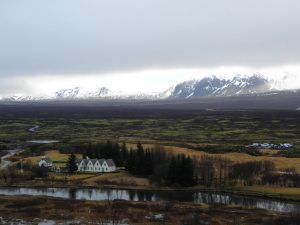 |
| Þingvellir National Park |
The Golden Circle
Iceland has so many wondrous natural features!
Waterfalls, mountains, glaciers, fjords, lava fields, volcanoes, and many other active geothermal features like hot springs and geysers.
Many tourists (including us) do the “Golden Circle” which has three main features Thingvellir, Geysir, and Gullfoss (so many people at these attractions, even in February).
Of course if you have plenty of daylight hours, you could add numerous other sights to your agenda along the way to and from Gullfoss (most likely with less people around).
Because we visited Iceland in February, the sun didn’t rise until around 9 am. I loved this! Although the shortened daylight hours available did limit what we could see in one day.
We added Faxi to our adventure (notably less people here) and I have to mention… I had so much fun the whole day, spotting Icelandic horses along the countryside.
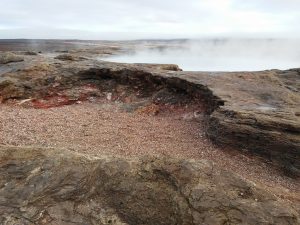 |
| Geysir |
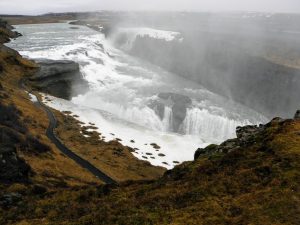 |
| Gullfoss |
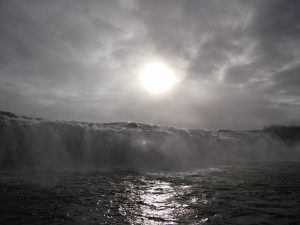 |
| Faxi |
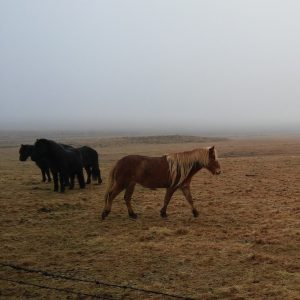 |
| Icelandic Horses! |
gold glitter sunbeams escaping dark clouds.
the sun seemed to hang low on the horizon
all day
eerily hovering in the same spot
somehow.
in a magical way
rain fell
in a bright silver shimmer
rainbows appeared!
one after the other
glimmering.
sparkling.
creating a surreal existence
where just for a moment
you glimpsed the end of the rainbow.
Þingvellir National Park
Google Maps – My Places – Starred and labeled “Where I Want To Go the Most!”
I was obviously in it for the rocks. The Mid-Atlantic Ridge! The rift valley where the North American and Eurasian tectonic plates are moving away from each other. Visible. Tangible. I desperately wanted to see this!
Thingvellir being the first stop on our “Golden Circle” day, we did a fairly quick walk through a small portion of the park. Starting at the Visitors centre, we walked along the path in Almannagjá, the gorge that marks the eastern side of the North American tectonic plate. From this path we saw the flag that marks the Lögberg (Law Rock) and continued down the path a little further when we came upon Drekkingarhylur (Drowning Pool).
I was morbidly fascinated with Drekkingarhylur. The Öxará River rushing over volcanic rock (which I feel is waterfall worthy), pooling in a small area before rushing over the edge of the pool, down to the rift valley floor. A sign nearby read, “Seventy-two people are known with certainty to have been executed at Thingvellir from 1602 to 1750: 30 males were beheaded, 15 hanged, and nine burned at the stake. Eighteen women were drowned here in Drekkingarhylur.” I caught myself daydreaming about the lives of people during an age where these forms of punishment were considered reasonable.
After the Drowning Pool we turned back to return to the Visitors centre. We didn’t walk down by the church in the valley, and we didn’t see Öxaráfoss, but it gives me a reason to visit the park again.
“Thingvellir is one of Iceland’s most important historical sites, fundamental to the history of Iceland and the Icelandic nation. The Althing (parliament) was founded here around 930 AD, and assembled each summer until the end of the Old Commonwealth in the 13th century. After that time it functioned as a court of law until 1798. Many crucial events in Iceland’s history took place here, such as the adoption of Christianity around 1000 AD, and the foundation of the modern Icelandic Republic in 1944. Thingvellir thus has a special place in the Icelandic consciousness. Since 1930 Thingvellir has been a National Park, and in 2004 it was added to the UNESCO World Heritage List.
The natural environment of Thingvellir is unique in the world. The geology of the region, together with the ecosystem of Thingvellir Lake, Iceland’s largest natural lake, constitute a valuable whole. The ecosystem of the lake is rich and the catchment area of the lake which is about 1,300 km2, is a huge resource for future generations. Thingvellir lies on the junction of two tectonic plates, on the Mid Atlantic Ridge. The junction of the two plates is more clearly visible here than anywhere else in the world: the two plates are constantly diverging, causing fissures and gullies throughout the zone.
Thingvellir had many advantages as a location for the Althing (parliament), but over the centuries the remarkable natural environment also led to some problems. Subsidence in the Thingvellir rift valley is believed to total about four metres since the Althing first assembled around AD 930, and this meant that water flooded over the assembly site. Thingvellir Church is believed to have been moved to a new site in the 16th century due to changes in the water level. The Lögrétta (Law Council) was also relocated in 1594 due to flooding. Severe subsidence during the earthquakes of 1798 caused more difficulties: grassfields were inundated, and new fissures opened. At Vatnskot the ground subsided by two metres, and Hallvegur, the old Thingvellir road, disappeared under water.”
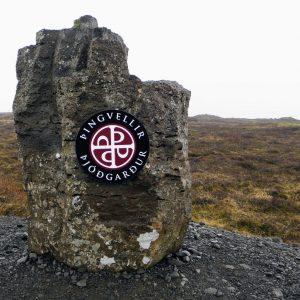 |
| Thingvellir National Park |
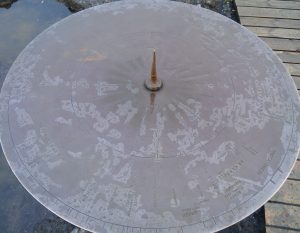 |
| Sundial |
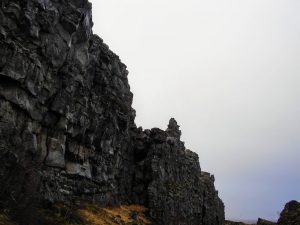 |
| Almannagjá |
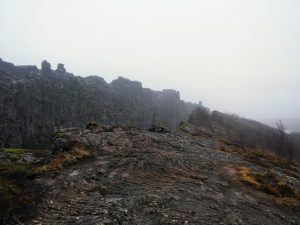 |
| Almannagjá |
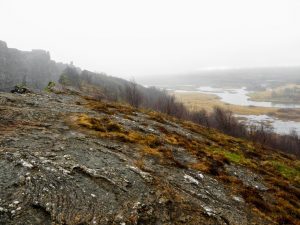 |
| Almannagjá (left), Öxará River (right). |
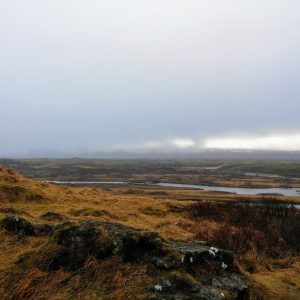 |
| Öxará River traversing the rift valley. |
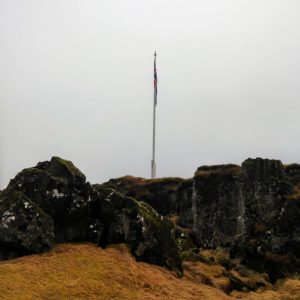 |
| Lögberg (Law Rock) |
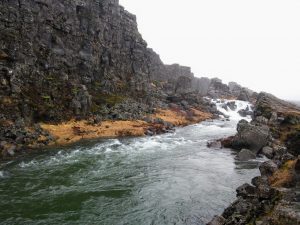 |
| Drekkingarhylur |
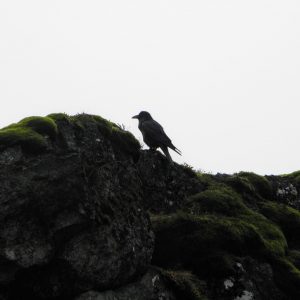 |
| A chatty Raven. |
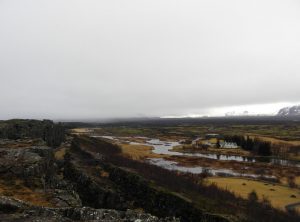 |
| The vastness of Thingvellir National Park is great! |
Straddling Two Continents
“Thingvellir lies within a belt of volcanic activity and fissures which passes across Iceland, a part of the mid-Atlantic Ridge, the junction of the American and Eurasian tectonic plates, Thingvellir is located at the western end of a rift valley which extends from the mountains in the northeast down to Thingvallavatn (Thingvellir Lake). Over the past 10,000 years the earth’s crust has been subsiding and diverging here. West of Almannagjá (Public’s man Gorge) the land is moving westwards, while to the east of the Hrafnagjá (Raven Gorge) it is moving eastwards, at the rate of about 3 mm annually. Readings indicate that the divergence over 10,000 years amounts to 70 meters. Over the same period the valley floor has subsided by 40 m. The extent of the subsidence can be seen by comparing the level of the top edge of Almannagjá and the plains below.”
Taken from the park brochure available at the Visitors centre.
Thingvellir National Park. What a fascinating place to experience in person! Ultimately, pictures don’t do this amazing geological feature any justice.
Did I mention you have to pay to use the toilet here? Which in all honesty is fine, but a little unexpected…
February 19, 2017 – All photos were taken by me (Alicen) or Nathan.














